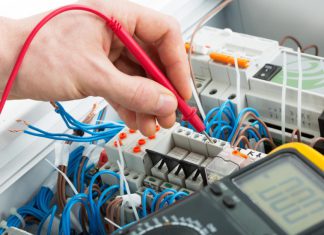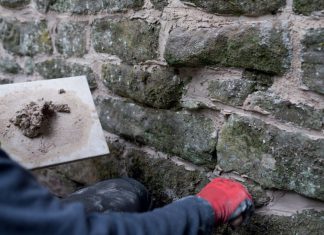In case you didn’t know, your home contains products and materials which are potentially dangerous. Some chemicals, such as those in tap water or dried paint, are found only in trace amounts. Others, namely cleaning fluids, plant food, and fuels, are present in much larger quantities. Illness and disease make us think about medications, yet another chemical. However, chemicals are used in everything from buildings to electronic devices. Plastic is present in your home more than you can imagine. For example, polyurethane is present in mattresses, office furniture, and roof insulation.
You want your home to be a safe, healthy place, but the odds seem impossible with all the toxins in everyday life. Reducing household pollution is extremely difficult but not impossible, meaning it’s a formidable challenge you can tackle with a balance of optimism and prudence. You spend so much time indoors, so practicing non-toxic living is essential to caring for your health and well-being.
Use All-Purpose Natural Cleaners
Household cleaners contain hazardous chemicals, such as chlorine, formaldehyde, triclosan, and phosphates, to name but a few. Getting rid of bacteria and germs requires cleaners and disinfectants that can cause discomfort to the skin, eyes, nose, and throat. They can also be lethal if swallowed. What’s concerning is that not all manufacturers display their labels in a visible manner, leaving consumers in the dark. Keeping a clean home can help avoid allergies, skin infections, and respiratory distress, but if your cleaning supplies are toxic, it can lead to a great many problems.
Many cleaning brands say they’re natural or green, but their claims are often unsubstantiated and or misleading. More exactly, they take advantage of consumers willing to do the right thing. Before purchasing a natural cleaner with excellent environmental credentials, do your research. Better yet, make your own cleaning products. Baking soda and vinegar can function as all-purpose cleaners but don’t mix them together. While it won’t hurt anyone, the combination won’t do a good job because baking soda and vinegar cancel each other out.
Forget About Nonstick Cookware
Nonstick cookware, such as those covered with Teflon, is popular because it’s easy to use and clean. It’s no longer necessary to cook food in enormous amounts of oil, and accept the fact you might have to let go of half of it to the frying pan. You don’t have to soak your pans overnight or scrape off burnt food, but at high temperatures, the coating starts to break down, releasing toxic fumes into the air. Simply put, your nonstick cookware can put you at a higher risk of thyroid disorders, kidney disease, liver disease, and even cancer. Even if perfluorooctanoic acid (PFOA) has been removed from Teflon products, there are countless other components, such as per- and polyfluoroalkyl substances, which aren’t fully understood.
Make The Switch to Healthier Furniture
So, perhaps it’s not entirely surprising that furniture can be a repository of hazardous chemicals that may harm your health or that of your children. Regrettably, built-in cabinetry, baby furniture, and many products from overseas are made with volatile organic compounds (VOCs), which may influence indoor air quality. Exposure to VOCs can lead to various health issues, of which mention can be made of headaches, loss of coordination, dizziness, fatigue, and memory impairment. There’s no better time than now to make the switch to healthier furniture. Products that have the OEKO-TEX certification are safe for human health.
Maybe you’re curious to know what is OEKO TEX. In that case, you need to know that OEKO-TEX is one of the most respected labels in the world for harmful substances. An OEKO-TEX certification provides assurance that the product is free from harmful chemicals and, therefore, safe for human consumption, providing much-needed peace of mind. Make sure the upholstery fabrics are manufactured and guaranteed under the STANDARD 100 by OEKO-TEX. Review by an independent and unbiased third party is the best way to verify claims of greenness. By making a few targeted choices when acquiring furniture, you can seize a valuable opportunity to improve health and well-being in your home.
Update To a New Heating System
Gas heaters release noxious gasses like carbon monoxide, nitrogen dioxide, and formaldehyde, so it goes without saying that using them indoors is dangerous. It’s recommended to have your gas heater serviced at least two times a year by a qualified professional to keep your family safe. If you have health problems that seem to be worse or occur when the heating is on, consider ditching the old gas heater in favor of a heat pump, for example. Heat pumps don’t depend on fossil fuel usage to produce warm air, meaning you use less gas and electricity. The heat pump collects warmth from the air, turning refrigerant into vapor, which is then compressed to heat and transported into your home.
Add Some Plants
Houseplants clean the air, removing many of the toxins found indoors, such as acetone, benzene, formaldehyde, and ammonia. Examples of plants that remove the toxins from the air include but aren’t limited to aloe vera, snake plants, peace lily, and English ivy. Aloe vera, for instance, works by releasing oxygen and absorbing carbon dioxide during the night, so you breathe in fresh air when you wake up in the wee hours of the morning. Spider plants are easy to keep alive, as they have evergreen leaves that look good year-round. Keep the compost moist from spring to summer, but reduce watering in winter.
Poor air quality is responsible for premature deaths; heart disease and stroke can be attributable to air pollution. Since you spend roughly 90% of your time indoors, you need to be thinking more about indoor air quality. Raising plants is a healthy home move because they do more than just clean the air. The leaves take in carbon dioxide and other pollutants, which are then used in different plant processes and broken down. Needless to say, you need a great many houseplants to have a measurable impact on the removal of VOCs and other gasses.















